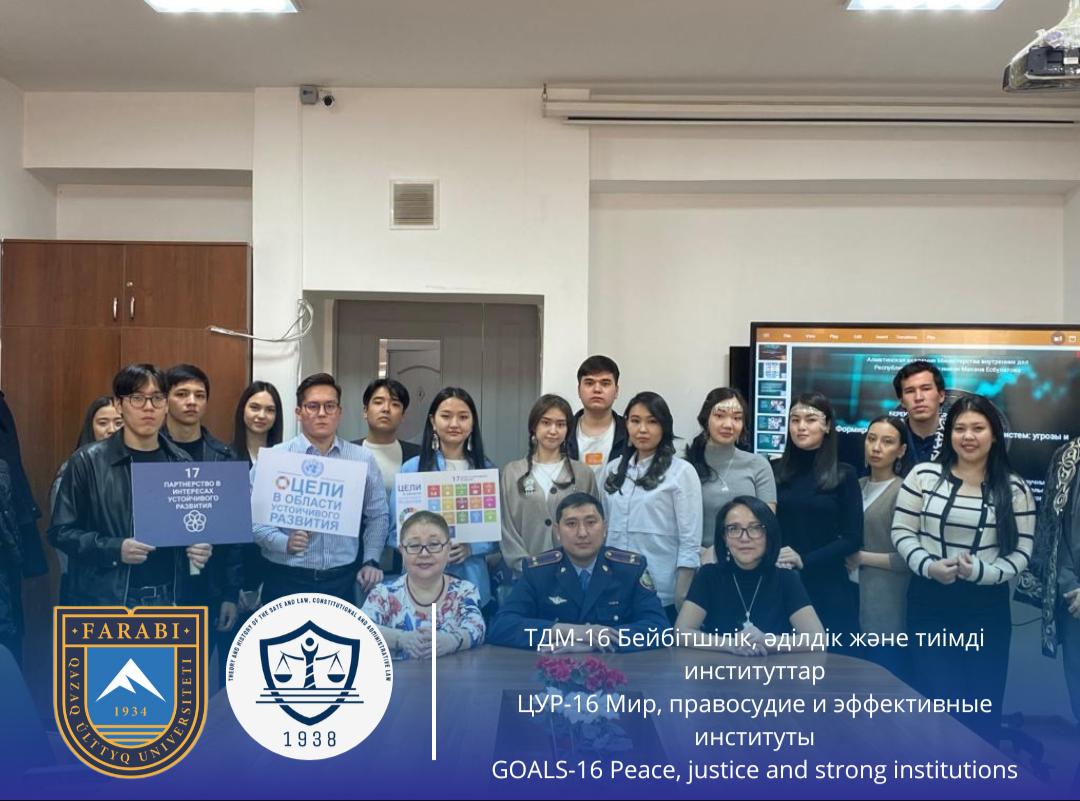Partnership for Sustainable Development

On March 19, 2024 at 12:00 at the Faculty of Law of al-Farabi Kazakh National University, within the framework of SDG 17 "Partnership for Sustainable Development", teachers of the Department of Theory and History of State and Law, Constitutional and Administrative Law, D.Y.N. Baymakhanova D.M., K.Y.N. Kultemirova L.T. and K.Y.N. Kusainov D.O. organized a Leadership lecture on the topic “Formation of modern payment systems: threats and prospects” with the participation of 1st year students. The speaker was Askar Talgatovich Berekenov, police lieutenant colonel, employee of the Scientific Center of the Almaty Academy of the Ministry of Internal Affairs of the Republic of Kazakhstan named after. M. Esbulatova.
The speaker in his speech touched upon the important issue of the history of the origin of money, the first funds in different states, among different peoples. Askar Talgatovich revealed the order of origin of coins, subsequently paper money, as well as electronic analogues of money. The speaker noted that it is important to understand what Bitcoin is, what the concept of “blockchain” means, and what other types of electronic currencies exist. The speaker talked about what mining farms are and revealed ways to purchase electronic currency. Askar Talgatovich especially drew attention to the fact that electronic currencies, such as Bitcoin, are not legally recognized as means of payment in Kazakhstan.
The speaker paid special attention to the issue of potential financial liquidity of these types of currencies and noted that their exchange rate tends to constantly fluctuate strongly. The specific examples given by Askar Talgatovich to illustrate his theses aroused great interest among students.
The students listened with great interest to the lecturer who touched on such topical issues, asked many questions and noted that in the modern world the presence of electronic currencies is a fait accompli, but the acquisition of such funds carries certain financial risks.
